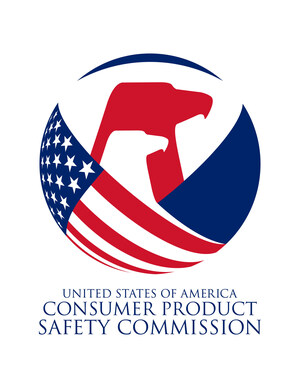WASHINGTON, Aug. 17, 2021 /PRNewswire/ -- https://www.cpsc.gov/Newsroom/News-Releases/2021/Ingestion-of-High-Powered-Magnetic-Balls-and-Magnetic-Cubes-Poses-Serious-Risk-of-Severe-Internal-Injury-or-Death-in-Children-and-Teens
The U.S. Consumer Product Safety Commission (CPSC) once again is warning parents and caregivers about the dangers of high-powered magnetic balls and cubes. Today, the CPSC announced a mandatory recall of 10 million Zen and Neoballs magnets due to an ingestion hazard and risk of death. Most recalls are done voluntarily with the firm and CPSC working together to get dangerous products out of consumers' hands. Because Zen did not agree to a voluntary recall, CPSC sued the company to effect a mandatory recall.
When high-powered magnets are swallowed, they can interact with each other or other metallic objects (material attracted to magnets) and become lodged in the digestive systems. This can result in perforations, twisting and/or blockage of the intestines, infection, blood poisoning, and death. These injuries can occur when infants, toddlers, and teens access and ingest the magnets, including, for example, when teens use the magnets to mimic mouth piercings and swallow them inadvertently.
To help protect children from this hidden hazard, CPSC has issued violation notices to companies that market dangerous, high-powered magnetic balls and cubes as toys for children, insisting that those companies notify purchasers and warn of the dangers of use by children. CPSC also works with major online platforms to remove these products from their sites.
The agency is also warning parents and caregivers to be extremely cautious with magnets that are not subject to the Toy Standard and are marketed for adults. Numerous magnet ingestion incident reports involving children and teens identify magnets marketed only to adults and with involving products intended for adults demonstrate the difficulty caregivers have preventing children and teens from accessing the magnets, and continued misunderstanding of the likelihood and severity of this hidden hazard.
"When consumers see these products marketed for children on trusted e-commerce sites, many of these items sold by foreign firms, consumers assume they are safe," says Acting Chairman Robert Adler. "But the reality is, these magnets can cause lifelong injury, or worse, to kids. That's why it's so important that e-commerce sites not allow these products to be sold to kids and why kids are safest when these products are not in the home."
In some cases, when the magnet firms were not responsive, CPSC worked with e-commerce sites to issue safety alert notices directly to purchasers.
"The sad truth is we're playing whack-a-mole with these dangerous products, and each one we miss could have grave consequences for young children and teens," said Adler. "But until we can get these products off the market entirely, we just have to be vigilant."
From 2009 to 2018, there were two deaths in the U.S. and at least an estimated 4,500 magnet-related cases treated in U.S. hospital emergency departments for ingestions of magnets with characteristics of magnet sets (e.g., numerous small, round magnets), most by children 11 months to 16 years old.
To help prevent serious magnet ingestion injuries and deaths, follow these safety tips:
- Make sure your children, including teens, understand the magnet ingestion hazard and to never put magnets near their mouth or nose. It is important to explain that magnet ingestions often occur accidentally while playing or using the magnets like piercings.
- Remove magnet sets, small magnets and small pieces containing magnets from the homes with children who might mistakenly, or intentionally, swallow them.
- Look out for loose magnetic pieces–and regularly inspect toys and children's play areas for missing or dislodged magnets.
- Seek immediate medical attention if you suspect your child may have swallowed a magnet.
- Look for non-specific abdominal symptoms, such as abdominal pains, nausea, vomiting, and diarrhea. In some cases, these and other symptoms may not appear until after serious internal injury has occurred—do not wait for symptoms.
- Note that objects in x-rays may appear as a single object that could actually be multiple magnetic pieces separated by trapped intestinal walls.
- Check www.cpsc.gov to make sure your children's magnetic toys have not been recalled. If they have been recalled, stop using them immediately, and get the remedy offered by the firm.
- To learn more about how and why magnetic balls are so dangerous to children, please go to www.cpsc.gov/Safety-Education/Safety-Education-Centers/Magnets.
CPSC continues its enforcement efforts to address the hazard of dangerous magnets by issuing notices of violation and pursuing recalls. For a listing of recalls and notices of violations to companies that marketed their magnetic balls and cubes to children in violation of federal safety standards for toys, click here.
About the U.S. CPSC
The U.S. Consumer Product Safety Commission (CPSC) is charged with protecting the public from unreasonable risks of injury or death associated with the use of thousands of types of consumer products. Deaths, injuries, and property damage from consumer product incidents cost the nation more than $1 trillion annually. CPSC's work to ensure the safety of consumer products has contributed to a decline in the rate of injuries associated with consumer products over the past 40 years.
Federal law bars any person from selling products subject to a publicly announced voluntary recall by a manufacturer or a mandatory recall ordered by the Commission.
For lifesaving information:
- Visit CPSC.gov.
- Sign up to receive our e-mail alerts.
- Follow us on Facebook, Instagram @USCPSC and Twitter @USCPSC.
- Report a dangerous product or a product-related injury on www.SaferProducts.gov.
- Call CPSC's Hotline at 800-638-2772 (TTY 301-595-7054).
- Contact a media specialist.
Release Number: 21-178
SOURCE U.S. Consumer Product Safety Commission

Related Links
WANT YOUR COMPANY'S NEWS FEATURED ON PRNEWSWIRE.COM?
Newsrooms &
Influencers
Digital Media
Outlets
Journalists
Opted In





Share this article